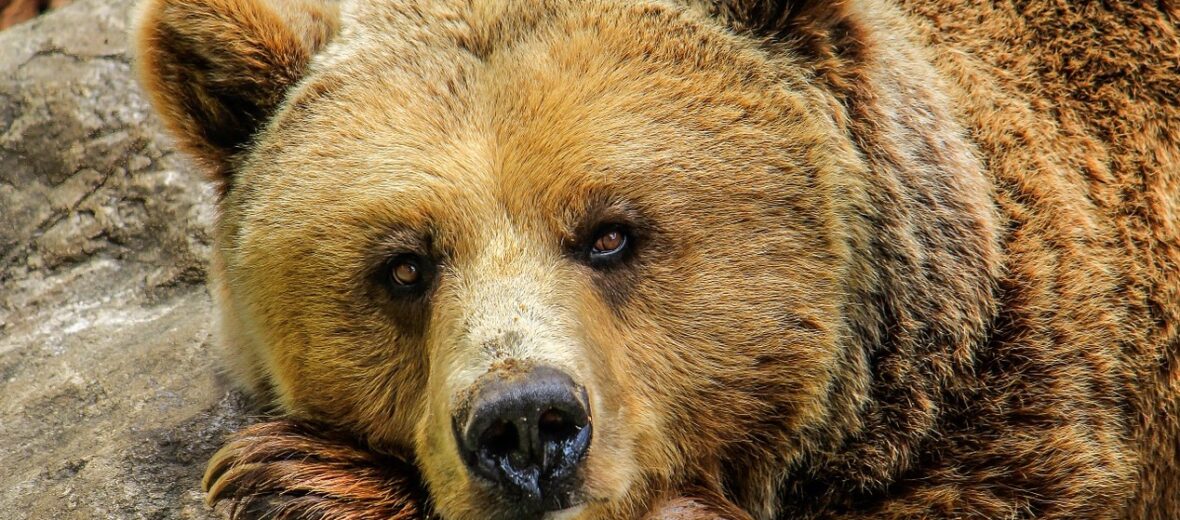
Found in North America, Europe, and Asia, the brown bear is a symbol of power and a force to be reckoned with and respected. While grizzly bears tend to get all the attention, the brown bear is larger and more abundantly spread out. There are an estimated 110,000 brown bears left in the wild to date. Even though they are affected by oil and gas industry pollution, climate change, habitat destruction, hunting, and vehicle strike (getting hit by cars) they are listed as Least Concern by the IUCN.
First the Stats…
Scientific name: Ursus arctos
Weight: Up to 1,300 lbs.
Length: Up to 9.2 feet
Height: Up to 5 feet, at the shoulders
Lifespan: Up to 25 years
Now on to the Facts!
1.) Brown bears spend up to 16 hours a day searching for food. Hey, one does not obtain a body like that by dieting.
2.) They are omnivores (eat both plant and animal matter), consuming fish, mice, leaves, twigs, berries, and garbage from human habitations.
3.) Only wolves, cougars, and humans prey on brown bears. And only the cubs are preyed on by animals.
4.) These giants are nocturnal (active at night) with crepuscular (active at dawn and dusk) habits.
5.) Brown bears are solitary. They only come together to mate and when food is plentiful.
But wait, there’s more on the brown bear!
6.) Their incredible sense of smell allows them to detect even the faintest scent of food from miles away. Their sense of smell is up to 2,100 times greater than a human’s and 7 times greater than a bloodhound’s.
7.) Their claws can reach up to 4 inches long! They are longer and straighter than those of the American black bear.
Did you know…?
Outrunning a brown bear is ill-advised as these beasts can reach speeds of up to 31 mph! And they can climb trees. So good luck there too.
8.) Males can patrol an area of up to 600 square miles!
9.) Brown bears have one of the largest brains of any land carnivore, relative to their body size and have been documented using tools; such as a barnacle-covered rock to scratch their neck. This shows advanced cognitive abilities.
10.) When battling one another for breeding rights or territory, these bears will use their paws to strike their opponents in the shoulders and chest and will bite the neck and head.
But wait, there’s still more on the brown bear!
11.) The brown bear remains the largest land carnivore in Europe.
12.) Females birth 1 – 3 and sometimes up to 6 cubs every 2 – 4 years. Breeding takes place from May – July.
Did you know…?
During hibernation, brown bears can lose up to 30% of their body weight!
13.) Brown bears hibernate during the winter. During this time they will not eat or drink and typically don’t even defecate (poop/pee).
14.) The mother bear will typically give birth during hibernation and will spend the winter months nursing her cubs.
15.) Nearly 50% of all brown bear cubs die before they reach a year old.
Now a Short Brown Bear Video!
Also, check out the Critter Science YouTube channel. Videos added frequently!
Want to suggest a critter for me to write about? Let me know here.



